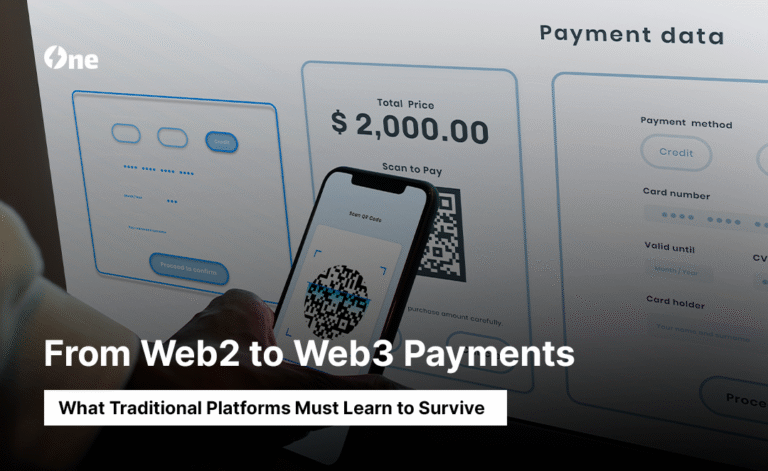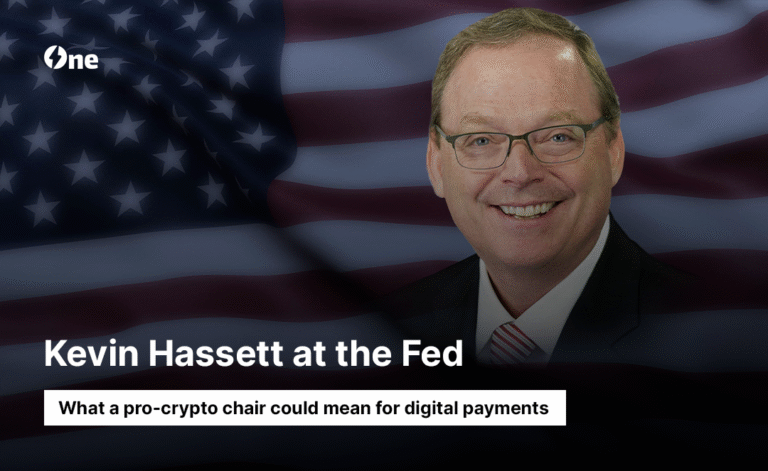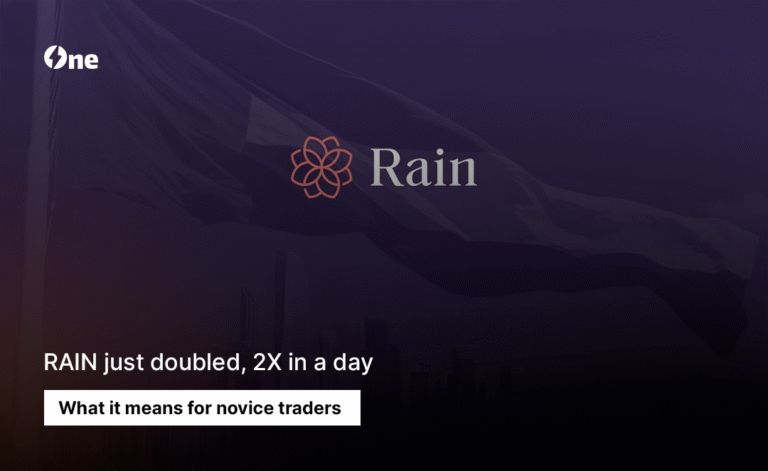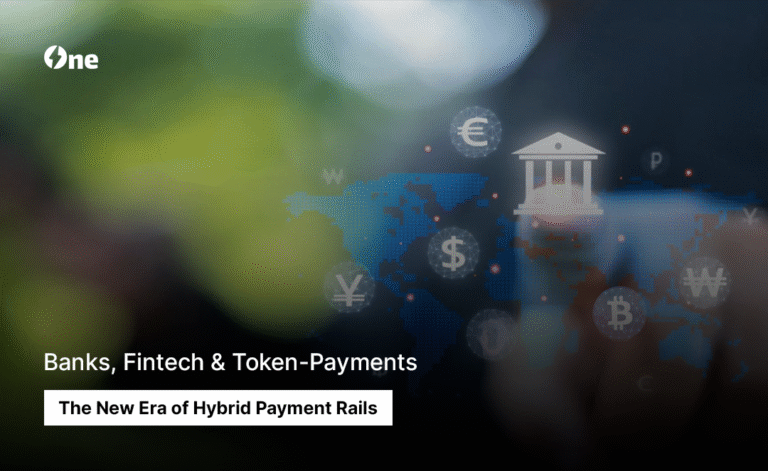October 18, 2025
From Web2 to Web3 Payments: What Traditional Platforms Must Learn to Survive
Learn how traditional payment platforms can adapt to Web3’s speed and efficiency. Discover how AIO bridges legacy systems to the future of payments.

For two decades, Web2 platforms such as e-commerce, SaaS, and online marketplaces, have powered the global digital economy.
Through the years, they have perfected user interfaces, optimized conversion funnels, and scaled to billions of customers.
But beneath that success lies an aging foundation: payment infrastructure built for another era.
Slow settlements, high fees, regional limitations, and fragmented data models have become the hidden tax of doing digital business.
And now, Web3 is exposing that inefficiency at scale.
The next decade won’t be defined by better front-end experiences, but by smarter, faster back-end money movement.
The Web2 Payments Paradox
Web2 payments excel at accessibility but not efficiency.
Behind the scenes, every “instant” checkout hides a maze of intermediaries: card processors, acquiring banks, networks, and clearinghouses.
Each layer adds latency, cost, and risk.
| Process | Web2 Model | Web3 Model |
| Transaction Cost | 2-3% | 0.3-0.5% |
| Settlement Time | 2-5 days | Seconds |
| Cross-Border | Restricted by region | Borderless |
| Data Flow | Fragmented across PSPs | Unified & transparent |
For years, this inefficiency was tolerable.
But as Web3-native businesses scale with lower overhead and instant settlement, traditional platforms are losing their advantage.
The Web2 model wasn’t built to move at blockchain speed.
What Web3 Gets Right
Web3 platforms built on blockchain rails are rewriting the rules of commerce:
- Instant global payments using stablecoins and on-chain transfers
- Self-executing smart contracts that remove manual reconciliation
- Interoperable wallets replacing siloed payment accounts
- Programmable value enabling automated subscriptions, royalties, and payouts
The result: faster transactions, higher margins, and better user retention.
For traditional platforms, this is both a warning and an invitation.
Why Legacy Systems Are Struggling to Adapt
It’s not that legacy payment providers don’t understand blockchain, it’s that their architecture was never designed for it.
Their systems rely on batch-based settlement cycles and closed data models.
Blockchain, by contrast, is real-time and composable.
This mismatch means legacy platforms face:
- Complex integrations with emerging crypto rails
- Higher operational overhead for compliance and reconciliation
- Limited ability to scale globally with instant liquidity
To stay competitive, traditional platforms must evolve from “payment processors” to “value networks.”
Lessons from Web3 for Web2 Leaders
Here’s what traditional payment and platform leaders can learn from Web3’s playbook:
1️⃣ Speed Is Strategy
- If you can move money faster, you can move markets faster.
- Settlement speed now defines business agility.
2️⃣ Cost Efficiency Scales Profitability
- Every saved percentage point in fees compounds into millions in retained revenue.
- Blockchain isn’t cost-cutting, it’s profit engineering.
3️⃣ Interoperability Drives Growth
- Closed networks create friction; open networks create ecosystems.
- Web3 thrives because it’s built for connection, not control.
4️⃣ Transparency Builds Trust
- Users don’t just want convenience, they want clarity.
- Blockchain gives both through verifiable, immutable data.
Web2 platforms that embrace these lessons won’t just survive, they’ll lead the next financial evolution.
The Bridge: AIO and the Hybrid Payment Model
Transitioning from Web2 to Web3 doesn’t mean abandoning existing systems.
It means bridging them.
Why It Matters:
- Plug & Play Integration: Works alongside legacy PSPs through APIs and webhooks.
- Batch Transfers: Reduce gas costs by up to 90%.
- Multi-Chain Compatibility: Support for EVM, TRON, BTC, and LTC.
- Unified Reporting: Real-time analytics across on- and off-chain transactions.
It’s the infrastructure that lets traditional platforms evolve without disruption.
That’s the philosophy behind AIO, a blockchain payment platform built for traditional enterprises seeking modern efficiency.
The Web2-to-Web3 Playbook for Executives
Leaders who successfully navigate this transition will focus on four key actions:
- Integrate, Don’t Replace: Add blockchain rails alongside existing payment systems.
- Prioritize Liquidity: Faster settlement equals stronger working capital.
- Design for Transparency: Make payment data auditable and accessible.
- Future-Proof Your Stack: Choose partners and APIs that evolve with the ecosystem.
These aren’t IT upgrades, they’re strategic imperatives.
Why This Shift Is Inevitable
Every major innovation in payments has followed the same pattern:
Cash → Cards → Digital → Mobile → Blockchain.
The curve is exponential, not optional.
By 2030, analysts predict that over 60% of global B2B and B2C payments will be processed through blockchain-based networks.
The companies adapting now are setting themselves up to lead that future.
History rewards those who build for what’s coming, not for what’s currently comfortable.
The Executive Takeaway
Web3 isn’t replacing Web2, it’s revealing what comes next.
The future belongs to platforms that treat payments not as a backend function, but as a strategic growth engine.
The next era of commerce won’t be about clicks, it’ll be about transfers.
AIO gives Web2 platforms the rails, reach, and readiness to evolve into Web3-native ecosystems.
Ensure your business’ evolution for the next generation of payments with AIO.



